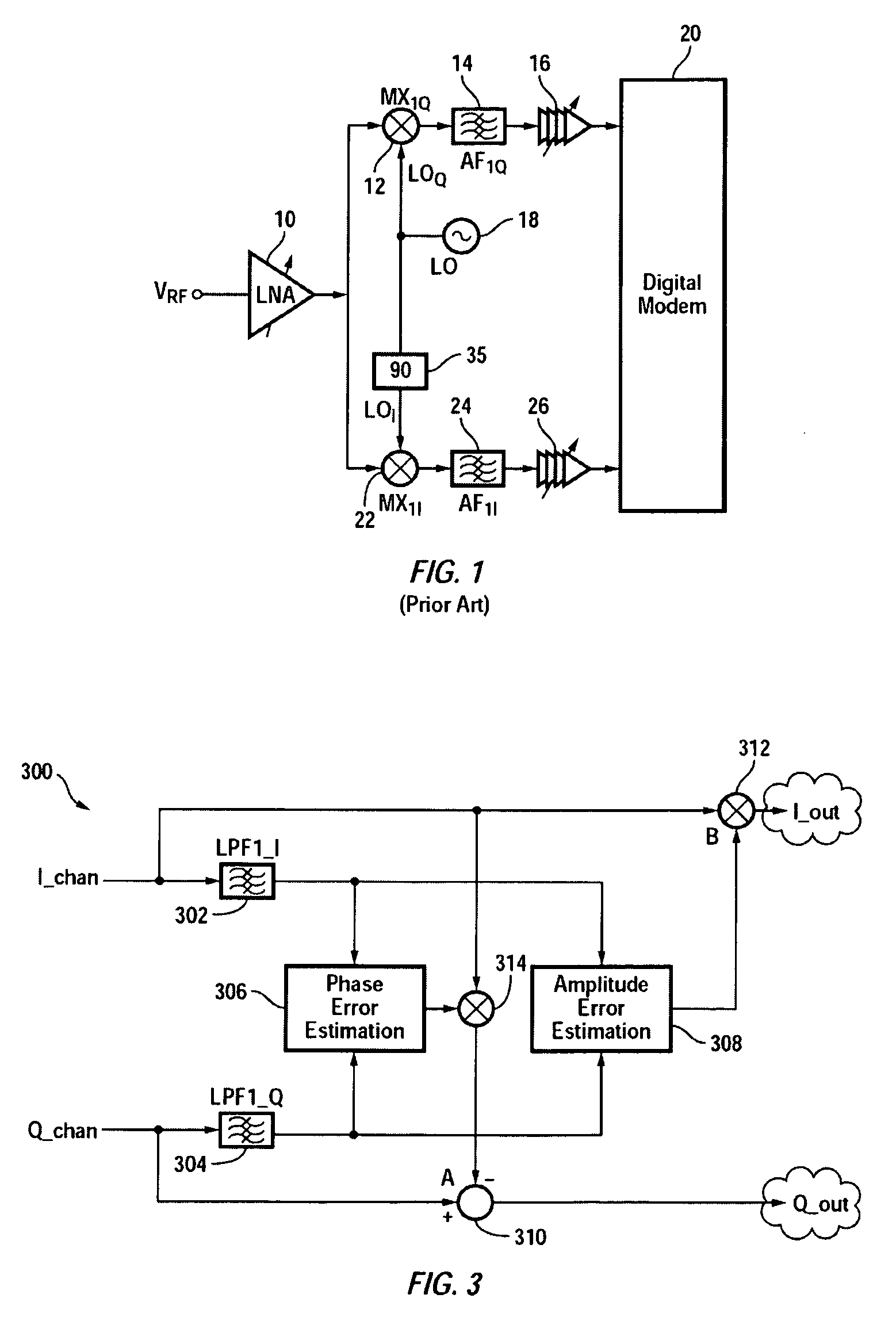I/Q Calibration Techniques
a calibration technique and calibration method technology, applied in the field of i/q calibration techniques, can solve problems such as signal folding onto itself, interference generated by imbalances, and mismatches in baseband circuits
- Summary
- Abstract
- Description
- Claims
- Application Information
AI Technical Summary
Benefits of technology
Problems solved by technology
Method used
Image
Examples
Embodiment Construction
[0018]In accordance with one embodiment of the present invention, I / Q mismatches (skews) in a direct conversion receiver is substantially minimized. FIG. 2 is a block diagram of a direct conversion receiver 500 shown as including, in part, an analog front end 100, a digital baseband 200, a static I / Q calibration block 300, and a correlator / integrator 400. The baseband analog I / Q signal path mismatches, such as those from the analog filters 14 and 24, are modeled as a systematic frequency response scaling in the analog signal path transfer function. In other words, mismatches in the analog signal path are treated as being frequency dependent.
[0019]FIG. 4 is a spectrum 370 of a signal received by receiver 500. Spectrum 370 is shown as having a first portion 355 associated with I / Q mismatches that are relatively frequency-independent, and second portions 350, 352 associated with I / Q mismatches that are frequency-dependent. Portions 350 and 352 are closer to edges of the bandpass filter...
PUM
 Login to View More
Login to View More Abstract
Description
Claims
Application Information
 Login to View More
Login to View More - R&D
- Intellectual Property
- Life Sciences
- Materials
- Tech Scout
- Unparalleled Data Quality
- Higher Quality Content
- 60% Fewer Hallucinations
Browse by: Latest US Patents, China's latest patents, Technical Efficacy Thesaurus, Application Domain, Technology Topic, Popular Technical Reports.
© 2025 PatSnap. All rights reserved.Legal|Privacy policy|Modern Slavery Act Transparency Statement|Sitemap|About US| Contact US: help@patsnap.com



